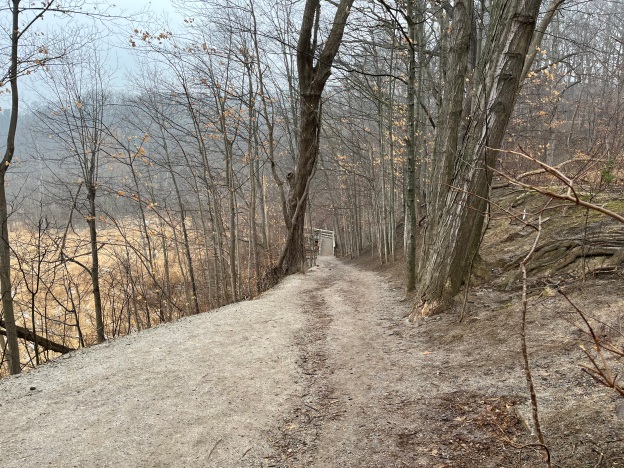January 16, 2022
The Riverwood Conservancy is located on 150 acres of an original 200 acre land grant that was part of the territory of the Mississaugas of the Credit First Nation. We’ve covered the history of this property in detail in previous stories about Riverwood and a full set of links will be provided at the end of this post. There’s lots of free parking on site although sometimes it can be busy on the weekends.
I always have to stop and admire this century old home that was built with stone carried up from the river below. An old set of stairs still leads from the back yard down to the trails below but it has been blocked off by a fence at the top. From the back yard you can also see the remains of the first man-made swimming pool in the present city of Mississauga and admire the old stone cistern.

The surrounding land was used for farming purposes and there’s still several old agricultural items strewn around the property. All of them are in an ongoing state of deterioration. This wagon has seen considerable rot since we published a picture in our 2014 post of Riverwood.
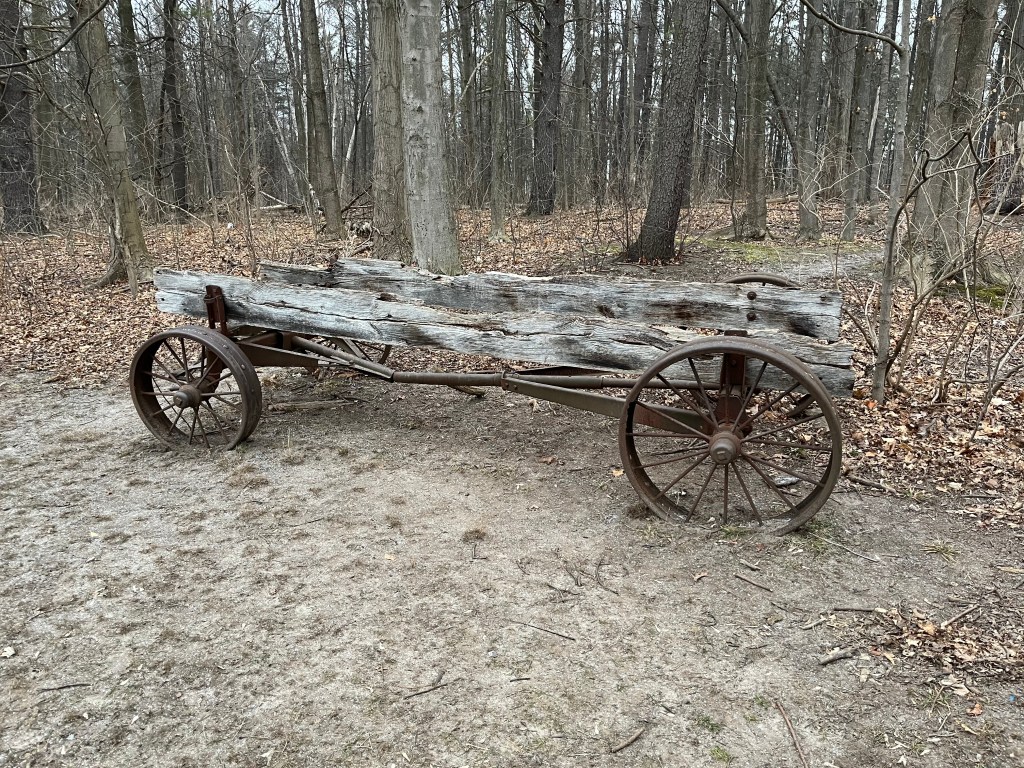
The Riverwood Conservancy has been in an ongoing state of development with new gardens and features being added over the years. One of the newest attractions is the Armstrong Wild Bird Trek. It was founded in 2017 and features a number of bird feeders along the Red Trail. Armstrong Milling in Hagersville provides birdseed that is placed in the feeders by volunteers. In the fall and winter, this attracts a lot of birds and subsequently a lot of bird watchers. The trail follows the edge of the valley and uses boardwalks to pass over wetlands and streams.

Most of the bird feeding stations have a sign identifying various species that can be found in the local habitat. The Conservancy claims 180 species of nesting and migratory birds can be seen in the park. There are fewer species in the winter but the ones that stay are more dependant on the feeders and become quite used to humans. This isn’t necessarily a good thing but at least they are getting nutritious food. For this reason, it is recommended that people not bring anything to feed the birds. Feeding them bread and domestic bird food is actually harmful to them. This male Cardinal was one of several that was waiting for a turn at the feeders.
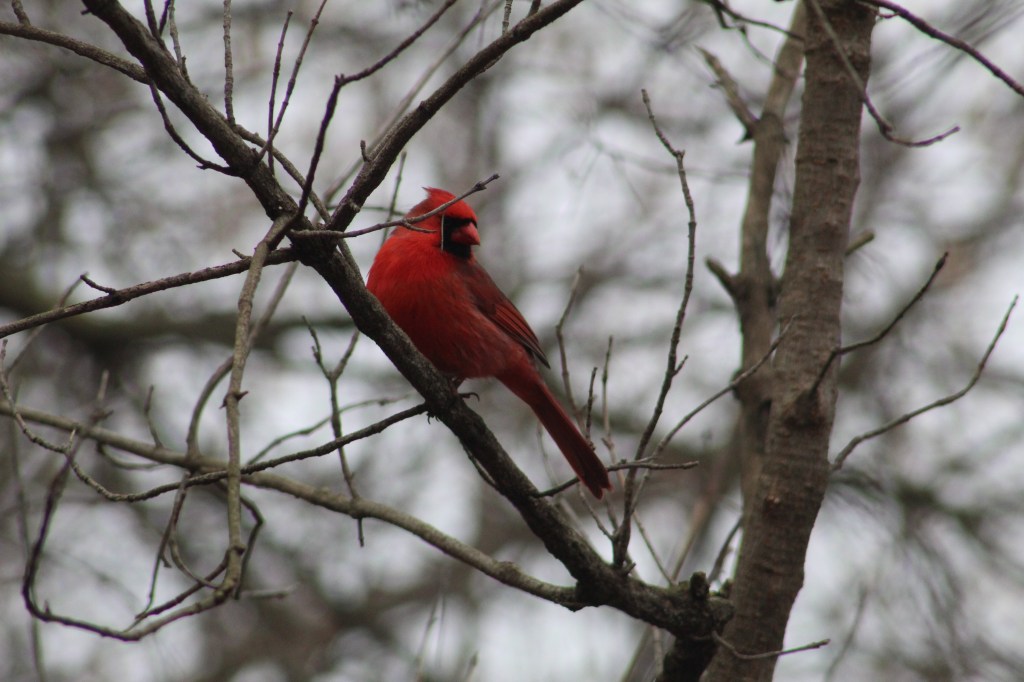
The Blue Jay is one of the largest song birds in Canada and there are four sub-species of which ours is known as the Northern Blue Jay. They tend to mate for life and can become aggressive if people approach their nest, especially in breeding season. Blue Jays can immitate the call of various hawks. A technique which they use to test and see if there are any in the area. They can become prey to hawks when alone but in groups will attack a hawk and drive it away.
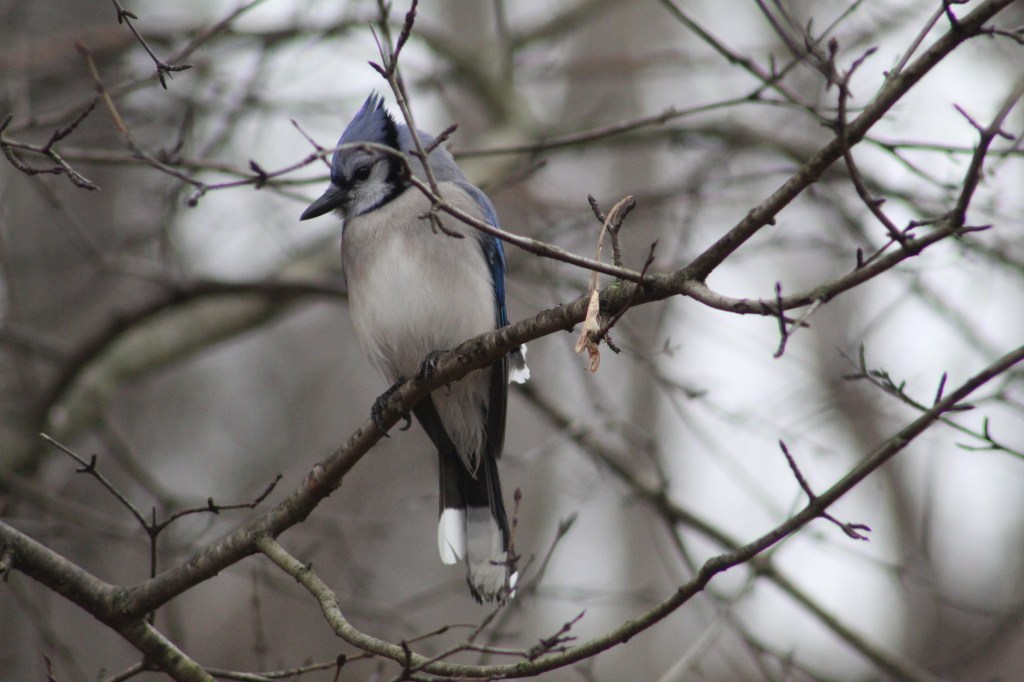
This male White-breasted Nuthatch can be distinguished from his female counterpart by the black cap on his head. The female has a cap which is a lighter shade of gray. If you take a few seeds from one of the feeders and hold them in the palm of your open hand it’s quite likely that a bird will come and land on you to feed.

Black-capped Chickadees are cute little birds that appear very friendly because they have very little fear of humans. It’s pretty easy to get one to sit on your hand if you have a few seeds in your palm.
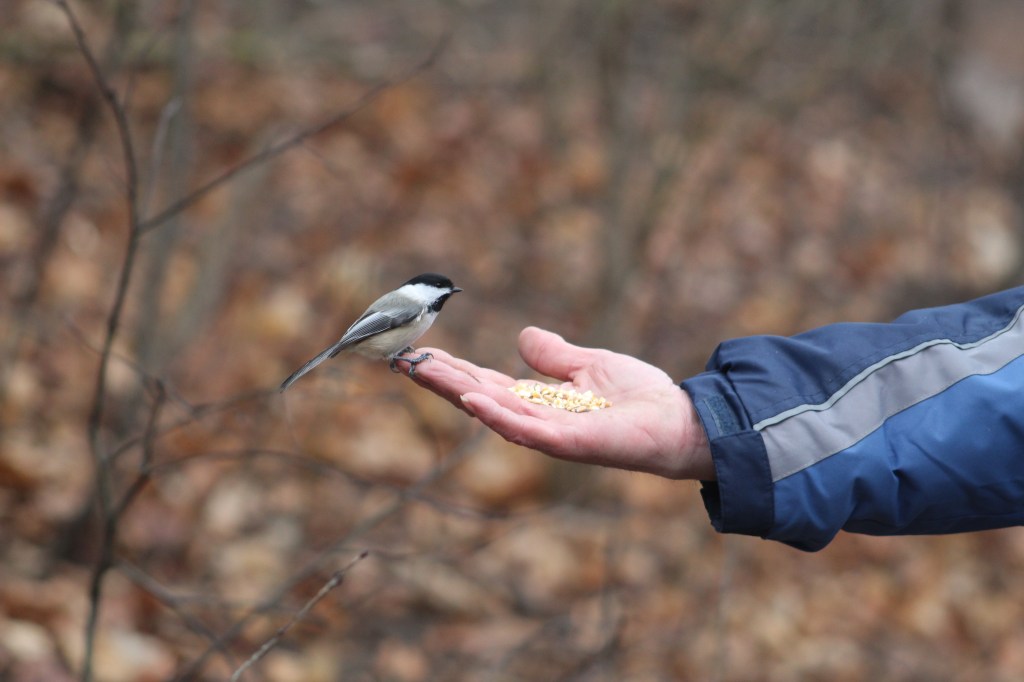
There’s an abundance of squirrels due to the free food but in most cases, they can’t get into the feeders. They hang around below them and eat the seeds that are thrown out by the birds. Where branches hang close enough to the feeder they will climb and jump into it. This is bad news because they are quite greedy, literally stuffing their faces.
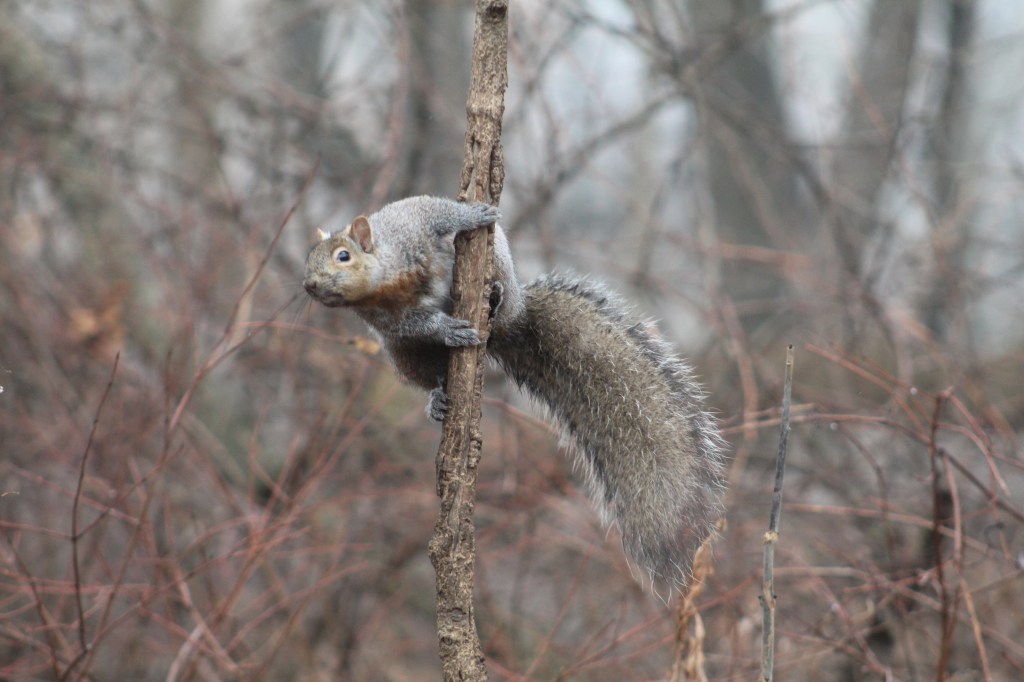
This little female Downy Woodpecker is happy to come and get a few seeds. These tiny woodpeckers are able to feed in places that the larger Hairy Woodpeckers and other species can’t get to. This includes eating insects from plant stems and pecking holes in goldenrod galls to get the larvae inside. These woodeckers can often be seen in mixed species flocks among the tall grasses with the other birds because there’s protection in numbers.

American Robins fly south to keep ahead of the frost line so that they can get adequate food. Those that stay behind switch their diet to berries and seeds and we saw several that were hanging around the trail. They tend to look fat in the winter but it is just the way that they fluff up their feathers.
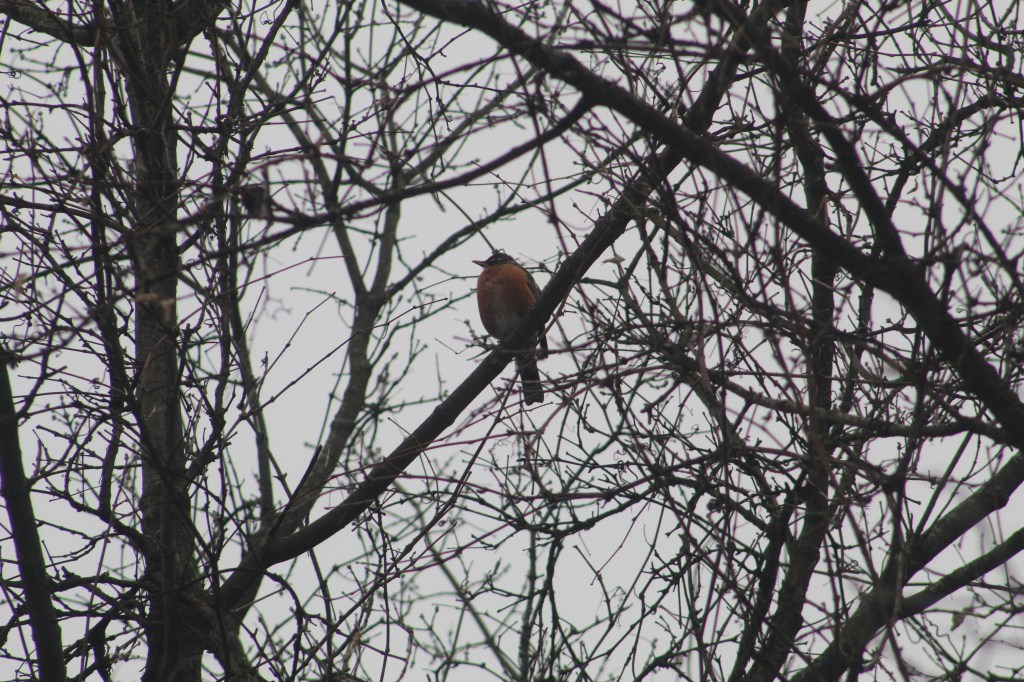
You have several options for a route back to the parking lot including retracing your steps along the Red Trail. The Culham Trail passes through Riverwood and can be used to create a return loop. We chose to take the smaller “fisherman’s trail” along the side of the Credit River. This will allow you to see some of the water birds that don’t use the feeders. On this day there were lots of Mallard Ducks and a pair of Mergansers and at times you could see a Kingfisher. We also caught a quick glimpse of a coyote trying to sneak past us unseen and were able to watch three White-tailed Deer browsing on the other side of the river.

Although there appears to be an increased number of Great Blue Herons that stay for the winter, I was a little surprised to step around a fallen tree and see one. Almost as surprised as it was to see me and my camera. With a loud honk, it was gone.
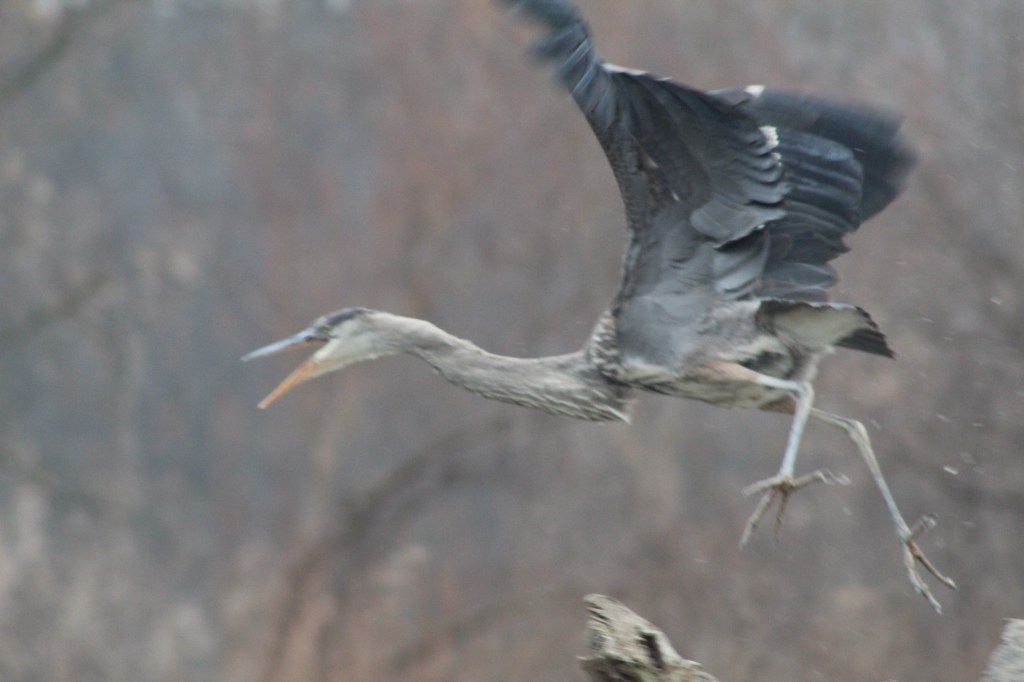
We’ve been through Riverwood many times over the years and there’s always something interesting to see. No doubt we’ll be back.
Related blogs: The Culham Trail, Riverwood – Bird Property, Riverwood Estate, Riverwood – Zaichuk Property
Google Maps link: Riverwood Conservancy
Like us at http://www.facebook.com/hikingthegta
Follow us at http://www.hikingthegta.com
Also, look for us on Instagram
